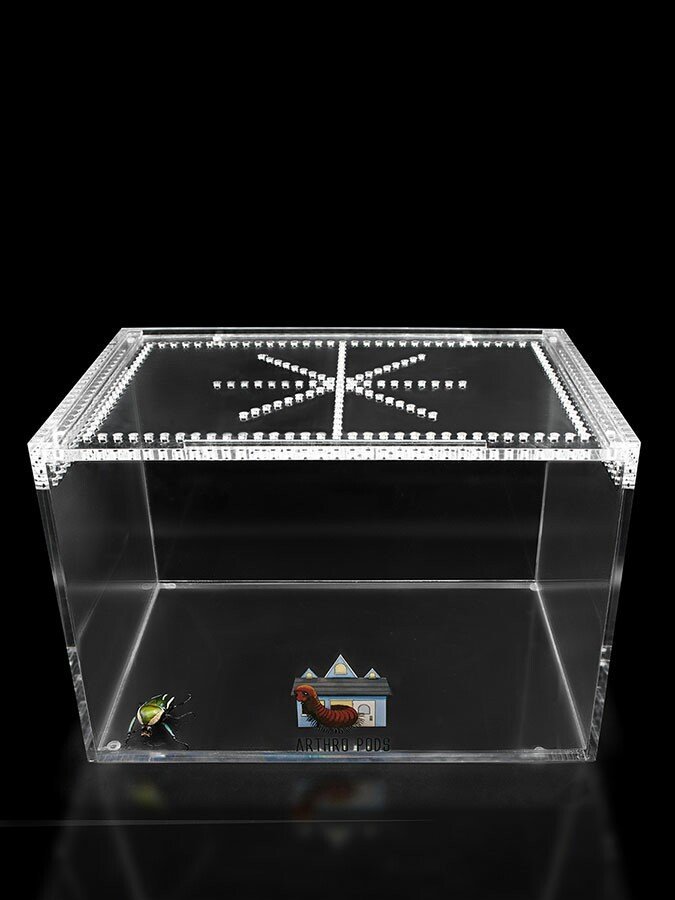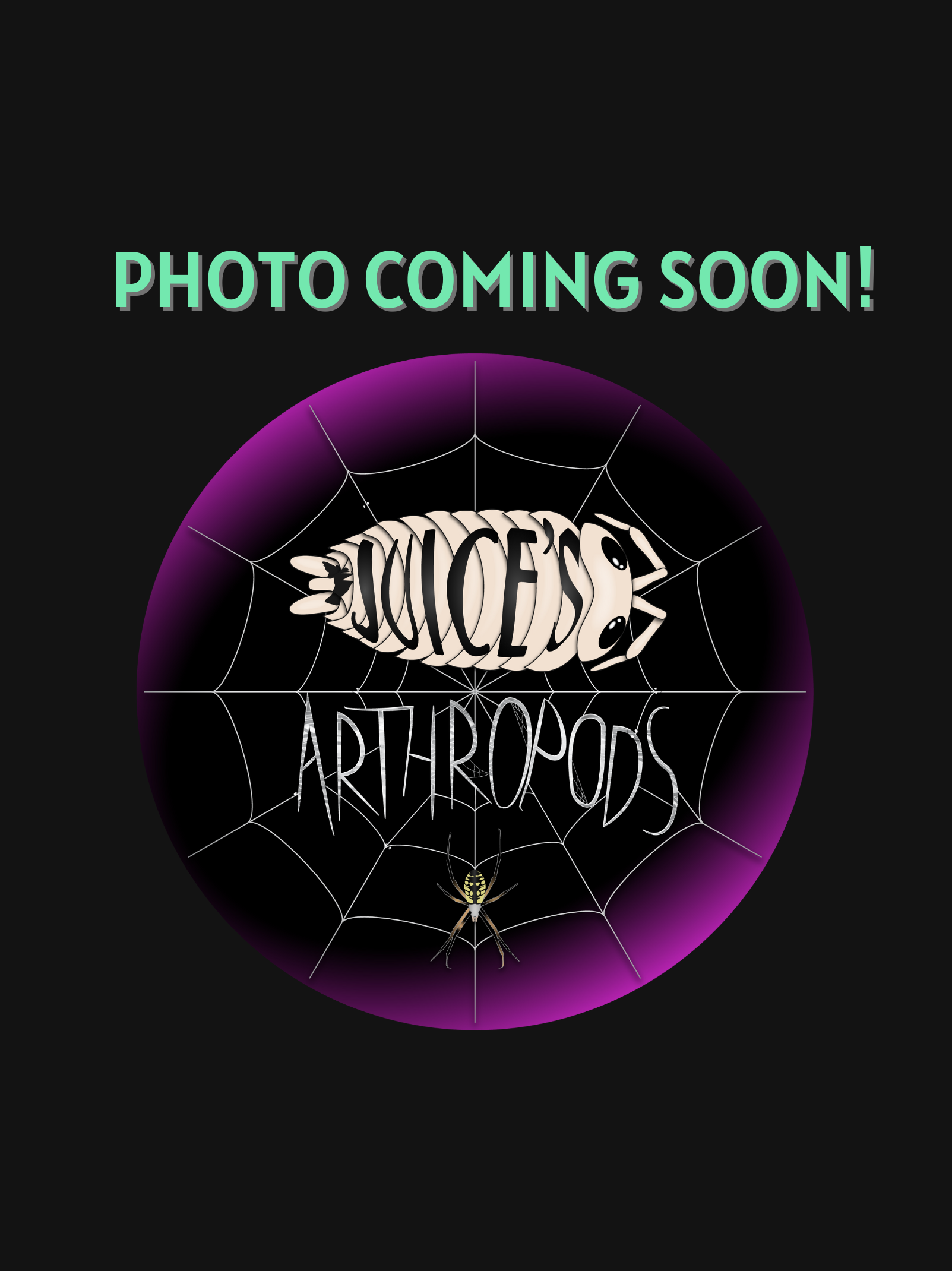 Image 1 of 4
Image 1 of 4

 Image 2 of 4
Image 2 of 4

 Image 3 of 4
Image 3 of 4

 Image 4 of 4
Image 4 of 4





Grammostola pulchripes
The Chaco Golden Knee is the single most overlooked tarantula in the hobby, having unfortunately to compete with its more vibrant and beautiful cousin the Grammostola pulchra or Brazilian Black Tarantula, these guys get every bit the same size, share the same ‘lab’ personality, and are truly a remarkable entry level into the hobby tarantula. The only thing that causes these guys to lose a couple of points is they aren’t remarkable looking beyond their leg patterns, and they tend to cost a bit more due to the females taking over 4 years to reach sexual maturity, unfortunately, meaning a higher price tag. If you must choose for your first starter tarantula between a Curly Hair Tarantula, a Mexican Redknee, or a Chaco Golden Knee, I’d pick the Chaco every single day, no questions asked.
The Chaco Golden Knee is the single most overlooked tarantula in the hobby, having unfortunately to compete with its more vibrant and beautiful cousin the Grammostola pulchra or Brazilian Black Tarantula, these guys get every bit the same size, share the same ‘lab’ personality, and are truly a remarkable entry level into the hobby tarantula. The only thing that causes these guys to lose a couple of points is they aren’t remarkable looking beyond their leg patterns, and they tend to cost a bit more due to the females taking over 4 years to reach sexual maturity, unfortunately, meaning a higher price tag. If you must choose for your first starter tarantula between a Curly Hair Tarantula, a Mexican Redknee, or a Chaco Golden Knee, I’d pick the Chaco every single day, no questions asked.
The Chaco Golden Knee is the single most overlooked tarantula in the hobby, having unfortunately to compete with its more vibrant and beautiful cousin the Grammostola pulchra or Brazilian Black Tarantula, these guys get every bit the same size, share the same ‘lab’ personality, and are truly a remarkable entry level into the hobby tarantula. The only thing that causes these guys to lose a couple of points is they aren’t remarkable looking beyond their leg patterns, and they tend to cost a bit more due to the females taking over 4 years to reach sexual maturity, unfortunately, meaning a higher price tag. If you must choose for your first starter tarantula between a Curly Hair Tarantula, a Mexican Redknee, or a Chaco Golden Knee, I’d pick the Chaco every single day, no questions asked.
What’s the ideal diet for a Chaco Golden Knee Tarantula?
All tarantulas can eat a variety of feeders. Stick to crickets, dubia roaches, silkworms, horned worms occasionally, and a superworm or mealworm as the occasional treat!
How should I keep a Chaco Golden Knee Tarantula?
You can start with the small Terrestrial Terrain enclosure for this particular creature if under a ¼” - 1.2” spiderling (sling). When they are about 1” in size, you will want to upgrade to the medium or large Terrestrial Terrain enclosure. Feed them as slings once a week, twice if their opisthosoma (abdomen) looks small, but if the opisthosoma is wider than their prosoma (pneumothorax), then wait a couple of days to feed. For juveniles or adults, stick to feeding once a week, nothing larger than their opisthosoma. Make sure to keep a full water dish at all times; wider and deeper is fine. Your tarantula can’t drown; they float on water.
How long could a Chaco Golden Knee Tarantula live?
For all tarantulas from the Grammostola genus we’ve researched, on average, females would live between 15-20+, with some believing them to live even longer now with studies currently being conducted and males living between 5-8 years. All estimates are based on multiple sources.
Care Guide for Grammostola Pulchripes
Key Points
Size and Growth: These tarantulas can reach an impressive 8-inch leg span as adults. However, they start tiny and grow very slowly, allowing new keepers to adjust gradually over 3-4 years as the spider matures.
Easy Care: They're extremely hardy and adaptable to a wide range of conditions. Mist the enclosure weekly, overfill the water dish, and maintain temperatures around 75-80°F. Just ensure proper ventilation to avoid excess moisture.
Feeding: Start with pre-killed prey for slings, then progress to appropriately sized live feeders as they grow. Adults eat less frequently - every 3-4 weeks is sufficient.
Longevity: Males live 5-7 years, while females can reach 25+ years. This requires long-term commitment but allows you to really bond with your pet.
Temperament: Despite their size, they're generally docile and make great display animals. They're also less likely to bolt or hide compared to smaller species.
Value: At around $30, they're far more affordable than similar species like the Brazilian Black (Grammosotola Pulchra) while having comparable personalities.
Some photos provided by iNaturalist, credit to:
Patricio Cowper Coles, some rights reserved (CC BY)















